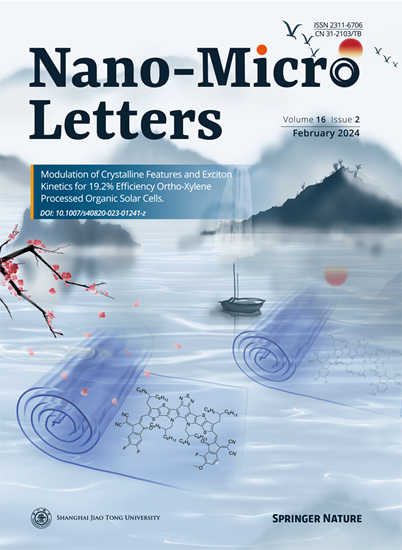Triple-Layer Porous Transport Layers with Ultra-High Porosity for Enhanced Oxygen Transport and Catalyst Utilization in Water Electrolysis
IF 36.3
1区 材料科学
Q1 Engineering
引用次数: 0
Abstract
Highlights
-
A novel triple-layer Ti-porous transport layer (PTL), fabricated using a practical and scalable tape casting and roll calendering process, enhances catalyst utilization by increasing interfacial contact area and the triple-phase boundary.
-
The ultra-high porosity (75%) backing layer and graded structure maximize oxygen transport, mitigate oxygen accumulation, and improve reactant accessibility.
-
Electrochemical evaluations demonstrate a 127 mV reduction in voltage at 2 A cm−2 compared to a commercial PTL, accelerating proton exchange membrane water electrolysis commercialization and supporting the transition to sustainable energy.
超高孔隙率的三层多孔输运层在水电解中的氧输运和催化剂利用。
绿色制氢的质子交换膜水电解(PEMWE)的商业化取决于低成本、高性能钛多孔传输层(PTLs)的发展。本研究介绍了一种三层Ti-PTL,该Ti-PTL具有梯度多孔结构和75%超高孔隙率的背衬层,通过带式铸造和轧辊压延制成。这种三层PTL由微孔层、中间层和高孔底层组成,提高了催化剂的利用率、机械完整性和质量传输。使用x射线的数字孪生技术显示,与催化剂层界面的接触面积和三相边界增加,显着改善了析氧反应动力学。数值模拟表明,精心设计的三层PTL多孔结构有助于有效的氧气输送,减轻氧气积累,提高反应物的可及性。电化学评估表明,与商业PTL相比,PEMWE的性能得到了改善,在2 A cm-2的电压下降低了127 mV,突出了其提高PEMWE效率和成本效益的潜力。
本文章由计算机程序翻译,如有差异,请以英文原文为准。
求助全文
约1分钟内获得全文
求助全文
来源期刊

Nano-Micro Letters
NANOSCIENCE & NANOTECHNOLOGY-MATERIALS SCIENCE, MULTIDISCIPLINARY
CiteScore
32.60
自引率
4.90%
发文量
981
审稿时长
1.1 months
期刊介绍:
Nano-Micro Letters is a peer-reviewed, international, interdisciplinary, and open-access journal published under the SpringerOpen brand.
Nano-Micro Letters focuses on the science, experiments, engineering, technologies, and applications of nano- or microscale structures and systems in various fields such as physics, chemistry, biology, material science, and pharmacy.It also explores the expanding interfaces between these fields.
Nano-Micro Letters particularly emphasizes the bottom-up approach in the length scale from nano to micro. This approach is crucial for achieving industrial applications in nanotechnology, as it involves the assembly, modification, and control of nanostructures on a microscale.
 求助内容:
求助内容: 应助结果提醒方式:
应助结果提醒方式:


